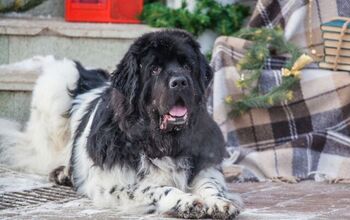Cherry Headed Conure


About Cherry Headed Conure
Considered as one of the best talking conures, these popular pets are full of fun and lovable traits. For anyone who is searching for a perfect pet parrot with a great balance between energy and affection, a Cherry Headed conure can be the best option. These great, friendly companions quickly settle down in a new environment and become a cherished family member. Cherry Headed conures are also a great option for singles and seniors, thanks to them being relatively hassle-free birds. The only thing you should take into account is their loud natural calls. Apartment settings might not be the best choice.
These are one of the most popular conure breeds in the pet parrot world. All thanks to their availability, affordable price, and fantastic, fun personality.
One of the iconic parrots of South America, the Cherry Headed conure is commonly found in jungles and deciduous forests of southern Ecuador and northern Peru. They also got used to life in semi-urban areas, thanks to their great ability to adapt. Thanks to the artificially introduced and feral populations, these conures can also be seen quite far from their natural home. Spain, Hawaii, Mexico, as well as San Diego, Los Angeles, San Francisco, Long Beach – can boast considerable populations of these colorful, lively parrots. Still, in their natural habitat, things go badly – and they are considered a near threatened species.
Although they retain most of the regular physical traits of the conure family, Cherry Heads are still unique in their own way. They are considered as one the largest in the conure family. The adults reach an average length of 13 inches (33 centimeters), although about half of it is reserved for the tail feathers. The weight reaches up to 7 ounces (185 grams). Conures are energetic and due to their length, they will require a plenty of free space. This includes both a roomy cage and the ability to fly freely about the house. A bird with enough exercise is less prone to getting sick, so keep it in mind.
One of the questionable traits that often pops up with new owners, is the level of noise. Cherry Headed conures certainly love to make themselves heard and have natural calls that can get a bit too loud. Consider this first, if you’re living in an apartment. On the other hand, they are also one of the best talking conures. While they won’t be as skilled talker as some African parrots, they will still develop a substantial vocabulary of commonly heard short words and phrases. The way in which they repeat them will surely put a smile on everyone’s face. This ability can also provide a good opportunity for interaction with your pet – you can teach them new words with a little bit of practice!
Conures are not known for flashy looks and exotic colors, but the Cherry headed conure is certainly a pretty bird. The body is mostly bright green, with lighter tones under the tail. Their iconic feature and the source of their name is their strikingly red head. There’s also the prominent white ring around the eyes, as well as the important detail of red patches on the shoulders. This contrasting, minimal combination of two colors is a straightforward and beautiful mix. Sometimes simpler is better, and this beautiful parrot is the proof of this.
Cherry Headed Conures get their name from the striking red color of their head.
In their natural habitat, these parrots depend on a balanced diet of seeds, fruits, insects and tree blossoms. The best first step concerning your pet’s diet is the commercial seed mix specifically designed for conures. This ensures a healthy combination of millet, oats, sunflower seeds, and other similar goodies. To balance this diet out, you will want to provide a healthy dose of fresh fruits and vegetables, such as oranges, apples, pears, cabbage, and carrots. Another important part of this is water. Provide fresh drinking water twice daily.
Conures, in general, are considered as hardy and strong birds with admirable health. Provided you take good care and optimize their living conditions, you should have a lively and happy bird on your hands. Some key things to keep in mind are a balanced diet, plenty of exercise, and a lot of social interaction. Conures depend on company and interacting, and a lonely bird will quickly get sick.
Loneliness is a great threat for parrots. To keep sickness at bay, make sure you interact and play with your pet.
Cherry Headed conures have a balanced mix of mostly positive traits. This makes them such a popular pet all over the US, and the rest of the world as well. A mostly energetic parrot, this goofy conure will simply love to play with you and the toys you give him. They can also be quite the little explorers. Besides the fun-loving persona, they have a secret affectionate side as well. Expect some quality cuddles and a plenty of petting. These fun parrots have also been popularized in a famous film called “ The Wild Parrots of Telegraph Hill”. See, there’s no denying the wonderful character of Cherry Headed conure- these birds even have a movie made after them!
Photo credit: JimboMcKimbo/Shutterstock;YolLusZam1802/Shutterstock; Christopher A. Salerno/Shutterstock

A proud mama to seven dogs and ten cats, Angela spends her days writing for her fellow pet parents and pampering her furballs, all of whom are rescues. When she's not gushing over her adorable cats or playing with her dogs, she can be found curled up with a good fantasy book.
More by Angela Vuckovic























